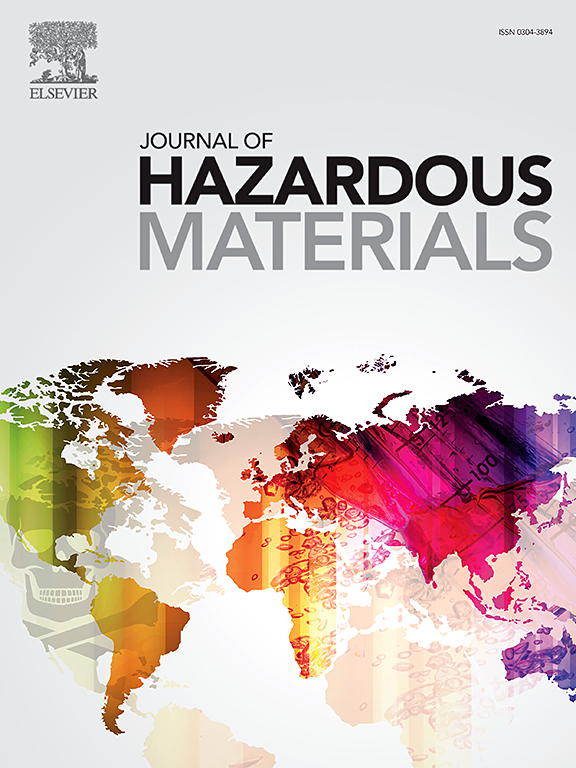Transfer Learning Enables Robust Prediction of Cellular Toxicity from Environmental Micro- and Nanoplastics
IF 12.2
1区 环境科学与生态学
Q1 ENGINEERING, ENVIRONMENTAL
引用次数: 0
Abstract
Micro- and nanoplastics (MNPs) are emerging pollutants that accumulate in ecosystems, food chains, and the human body, raising concerns about human health risks. However, understanding their toxicity remains challenging due to limited experimental data and the poor performance of conventional machine learning models on small, fragmented datasets. To address this, we developed a transfer learning-based quantitative structure-activity relationship (QSAR) model to predict MNP-induced cytotoxicity. Our approach leverages a three-layer neural network pre-trained on a large nanoparticle dataset and fine-tuned on three small MNP datasets. By incorporating experimental annotations (e.g., dose, exposure time) and quantum chemistry descriptors, the model enhances predictive reliability despite data scarcity. The transfer learning QSAR model achieved high performance (ROC-AUC = 0.88, balanced accuracy = 0.83, MCC = 0.67, accuracy = 0.83, precision = 0.93, recall = 0.70, and F1 score = 0.80) based on the independent test set, outperforming traditional methods. Feature importance analysis identified surface functionalization and dose as critical predictors of cytotoxicity. The results also suggest that nanoplastics may induce cytotoxicity more rapidly than microplastics, even with shorter exposure durations. This study demonstrates the utility of transfer learning in environmental toxicology and supports its use for emerging contaminants where data are limited. Future work will focus on expanding dataset diversity and refining models to improve generalizability for regulatory and risk assessment applications.

迁移学习使细胞毒性的鲁棒预测从环境微和纳米塑料
微塑料和纳米塑料是在生态系统、食物链和人体中积累的新兴污染物,引起了人们对人类健康风险的担忧。然而,由于实验数据有限,传统机器学习模型在小而分散的数据集上表现不佳,了解它们的毒性仍然具有挑战性。为了解决这个问题,我们开发了一个基于迁移学习的定量构效关系(QSAR)模型来预测mnp诱导的细胞毒性。我们的方法利用了一个在大型纳米粒子数据集上预训练的三层神经网络,并对三个小型MNP数据集进行了微调。通过结合实验注释(如剂量、暴露时间)和量子化学描述符,该模型在数据稀缺的情况下提高了预测的可靠性。迁移学习QSAR模型在独立测试集上取得了较高的性能(ROC-AUC = 0.88,平衡准确率= 0.83,MCC = 0.67,准确率= 0.83,精密度= 0.93,召回率= 0.70,F1分数= 0.80),优于传统方法。特征重要性分析确定表面功能化和剂量是细胞毒性的关键预测因子。结果还表明,纳米塑料可能比微塑料更快地诱导细胞毒性,即使暴露时间较短。本研究证明了迁移学习在环境毒理学中的效用,并支持其在数据有限的新兴污染物中的应用。未来的工作将集中在扩大数据集多样性和改进模型上,以提高监管和风险评估应用的通用性。
本文章由计算机程序翻译,如有差异,请以英文原文为准。
求助全文
约1分钟内获得全文
求助全文
来源期刊

Journal of Hazardous Materials
工程技术-工程:环境
CiteScore
25.40
自引率
5.90%
发文量
3059
审稿时长
58 days
期刊介绍:
The Journal of Hazardous Materials serves as a global platform for promoting cutting-edge research in the field of Environmental Science and Engineering. Our publication features a wide range of articles, including full-length research papers, review articles, and perspectives, with the aim of enhancing our understanding of the dangers and risks associated with various materials concerning public health and the environment. It is important to note that the term "environmental contaminants" refers specifically to substances that pose hazardous effects through contamination, while excluding those that do not have such impacts on the environment or human health. Moreover, we emphasize the distinction between wastes and hazardous materials in order to provide further clarity on the scope of the journal. We have a keen interest in exploring specific compounds and microbial agents that have adverse effects on the environment.
 求助内容:
求助内容: 应助结果提醒方式:
应助结果提醒方式:


